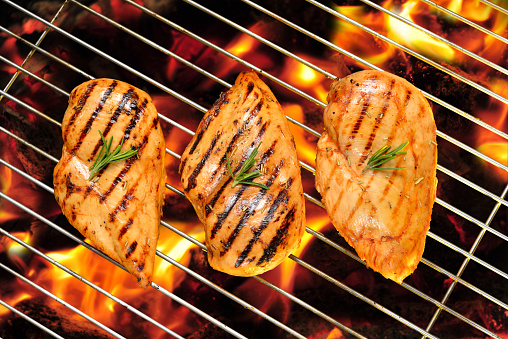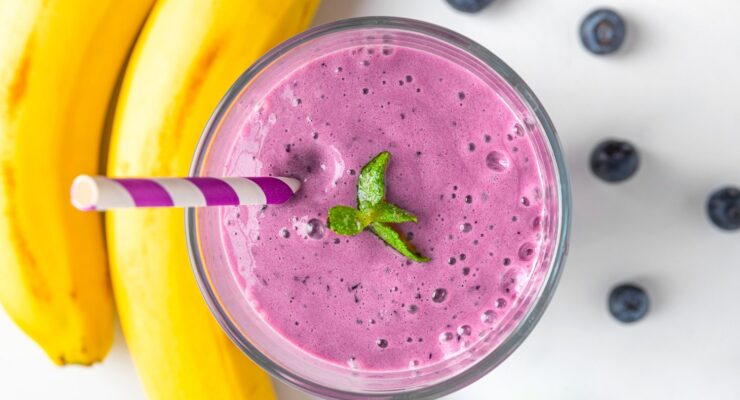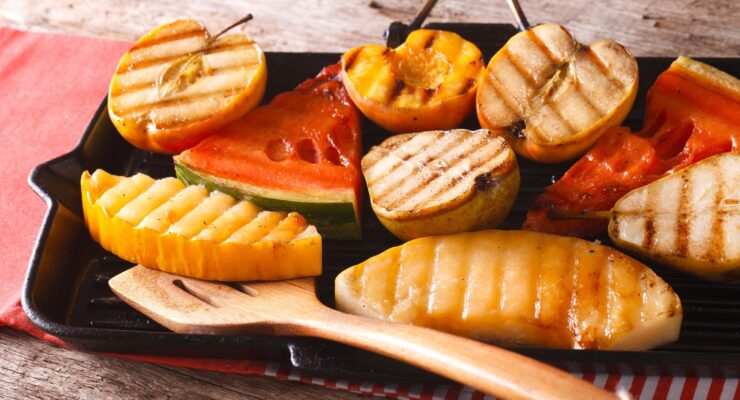How to Know if Your Food is Fully Cooked
Article posted in: Diet & Nutrition
The difference between “safe to eat” and “overdone” can be a matter of minutes, seconds even when you’re using the grill. So how can you tell when food is cooked to perfection? A meat thermometer is the most reliable way to get an exact reading, but these tips can be a handy guide:
Beef
Whether you’re cooking steaks or burgers, you want beef to be heated all the way through, while retaining its natural tenderness and juiciness. Beef can brown on the outside very quickly on the grill, but still be close to raw on the inside.
Safe temperature: 145°F for steaks and other cuts, 160°F for ground beef. Be sure the thermometer isn’t touching bone—it conducts heat and could give you a false reading.
Rule of thumb: Try the “touch test.” When you pinch the flesh of your hand below your thumb while your hand is relaxed, that’s what raw meat feels like. Touch your middle finger lightly to your thumb and pinch it to know what medium-rare meat feels like. For medium-cooked meat, touch your ring finger to your thumb. For well-done, touch your pinkie and thumb together.
Pork
While pork is much safer now than it was just a few decades ago, it’s still wise to avoid undercooked meat. The old caution about eating pork only when the meat is white no longer holds either—many factors, such as the pig’s breed and the cooking methods you use, could produce might with a light pink color that is within the safe temperature range. Cooking all pork until it’s a white or tan color can result in dry, tasteless meat.
Safe temperature: 145°F
Rule of thumb: When pressed with tongs or a fingertip, the meat should feel firm but easily spring back to shape. Some juices may be released, which should be clear or have only a faint tint of pink coloring.
Chicken
Undercooked chicken also is risky to eat, while overdone poultry dries out quickly. The flesh of cooked chicken is pale white or gray (in the case of the dark meat cuts), but you may come across a piece of chicken that’s vividly pink in the middle, near the bone. This does not mean the meat is underdone. In tender young chicken, the flesh along the bone contains hemoglobin, which cooks to a stable pink color. This is normal and doesn’t mean that part is not cooked thoroughly.
Safe temperature: 165°F
Rule of thumb: When you pierce the breast or thigh, hold the tip of your knife in the chicken for at least 15 seconds, then touch it to your lip or the inside of your wrist. If it’s hot enough to hurt, your chicken is likely done. When cooked completely, most of the flesh is pale and only the section along the bone is pink-tinged.
Fish
No food changes from under- to overdone as quickly as fish does, especially at the high temperatures produced by the grill. Even more challenging, fish continues to cook for a minute or two off the heat. Chefs recommend cooking fish for about eight minutes per inch of thickness.
Safe temperature: 145°F
Rule thumb: Well-cooked fish becomes opaque and breaks up into flakes when poked with a fork. Undercooked fish resists flaking and is translucent. If you like fatty fish, such as tuna and salmon, a little less done, they are ready when opaque on the outside but still translucent at the center.
Shrimp
Perfectly done shrimp is tender and juicy, while overcooked is rubbery and dry. You want them to be pink with red tails, with slightly opaque flesh that’s pale white in color. Bright white flesh is often an indication of shrimp that is overcooked.
Safe temperature: 165°F
Rule of thumb: Shrimp form a C-shape when they are perfectly cooked. If they tighten into an O-shape, they are overdone.
Portobello Mushrooms
Temperature is not as much of a food safety issue with grilled vegetables as it is with meat, but you do want these big, meaty mushrooms to be warm and tender all over.
Safe temperature: 145°F
Rule of thumb: Grill portobellos with their stem sides down first until they start to look wilted, about eight minutes. Flip them and leave on the grill until condensation appears on the ribs of the mushrooms and grill marks form on the top of the mushroom cap, about six minutes.
Eggplant
Another meaty vegetable, eggplant is firm, yet melts in your mouth when it’s perfectly grilled. Overdone eggplant is chewy while undercooked eggplant can be bitter.
Safe temperature: 145°F
Rule of thumb: Grill medium-thick eggplant slices until they are well-browned, three to four minutes per side. Remove the slices from the heat and stack them to finish cooking for 15 to 20 minutes. This last step lets the residual heat steam the flesh so that it’s not raw in the middle.








